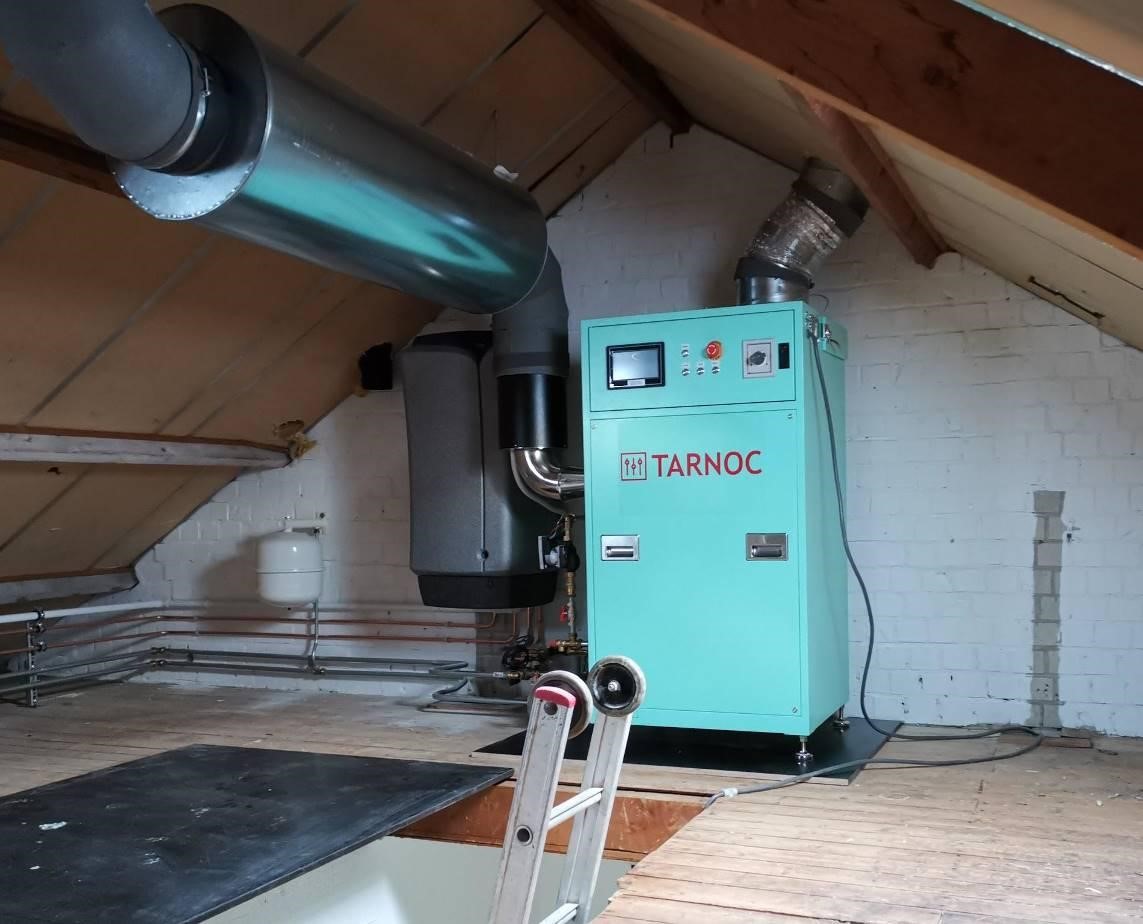Projects
Eliminating the need for central heating boilers almost effortlessly
In order to meet the objectives of the Dutch Climate Agreement, the Netherlands are making plans to equip around 200,000 houses a year with a sustainable heat supply in the coming years, signifying that these houses will need an alternative for being heated using central heating boilers that run on natural gas. However, many of the existing terraced houses in the Netherlands from before the 1990s are not suitable for existing alternative heat sources such as a heat pump. For these houses, high investments are currently required in e.g. insulation and low-temperature radiators, and a large, noisy outdoor condenser unit is often required.
As a solution to the outlined problem, Tarnoc has developed the Tarnoc Turbine Ketel (TTK - ‘Tarnoc Turbine Boiler’): a highly efficient, complete replacement for the old central heating boiler, that does not require additional components/devices or a condenser unit placed outside. The TTK supplies high-temperature water for heating and hot water, without requiring low-temperature radiators or a new thermostat. This should significantly lower the threshold for residents to switch from natural gas-powered central heating boilers to a more sustainable alternative.
The ‘Warmtewissel’ competition
With this concept, Tarnoc became one of the three winners of the 'Warmtewissel', a competition organized by 8 housing corporations from Brabant, the Netherlands. The aim of the Warmtewissel is to explore innovative techniques for making the residential heat supply more sustainable and to find an ideal replacement for the natural gas-powered central heating boiler. The 8 participating corporations replace approximately 5,000 individual gas boilers each year: there are currently no alternative solutions on the market to make these installations more sustainable, without having to thoroughly renovate every house. As one of the participants in the ‘Warmtewissel’ competition, housing corporation WonenBreburg has made a house in the Kruidenbuurt in Tilburg available as a test location.
The installation of a TTK will not be difficult for an installer: the device is connected to the existing heat emission system via 2 DN22 pipes and is powered by a 3-phase connection. A small boiler serves as a buffer tank for the hot water supply. The main function of the boiler is to prevent oscillation and temporarily raise the CW3 level of the Turbineketel to CW6. For example, a second tap water point can be provided with hot water for up to 15 minutes while showering.
Pilot test
Last year Tarnoc built a first complete prototype of the TTK and a first pilot set-up was realized and extensively tested in a house at Ganzerikhof in Tilburg. In this video, co-founder Vincent Wijdeveld talks more about it (in Dutch).
The TTK was installed in the attic of the house and was connected to the outside air via two air ducts with a roof terminal. From the outside, the house is barely distinguishable from the other houses in the street. There is no outdoor condenser unit that affects the appearance of the house or creates noise nuisance for neighbors. In addition, no adjustments have been made to the house itself and the installation can easily be combined with solar panels.

Pilot prototype TTK in a house from WonenBreburg
Extensive tests have been carried out with the pilot set-up and practical experience has been gained with user patterns and wishes, in order to optimally adjust the control technology for the residents. The next step is to develop the technology and demonstrate it on a larger scale, and then help contribute as quickly as possible to the goal of replacing tens of thousands of central heating boilers for a sustainable alternative every year.
Innofunding advises and supports Tarnoc in financing its innovations, including the application for the pilot project. An application for the demonstration mentioned above has recently been submitted.
The pilot project was carried out with a subsidy from the Ministry of Economic Affairs, National EZ subsidies and Topsector Energy, carried out by Rijksdienst voor Ondernemend Nederland.
